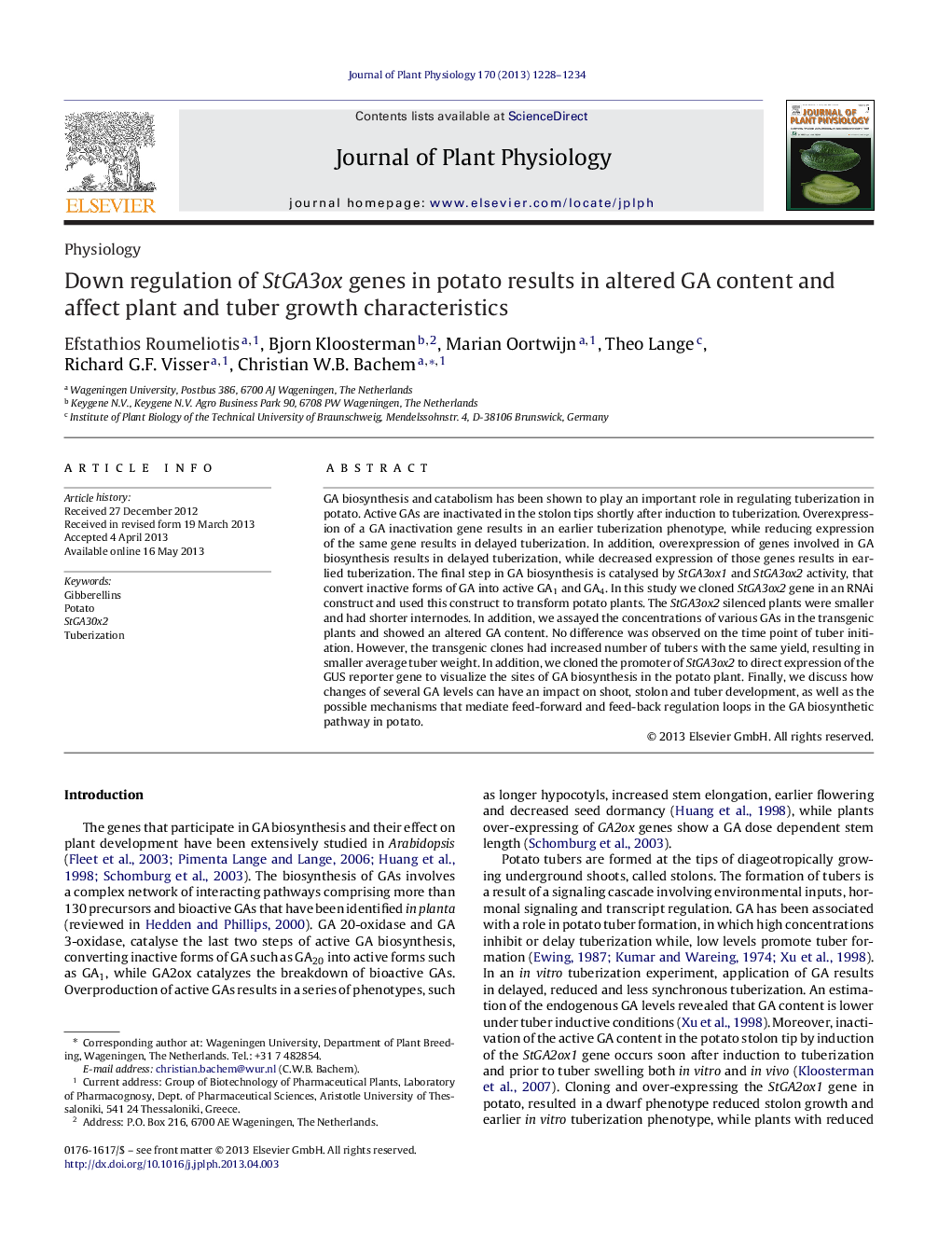| Article ID | Journal | Published Year | Pages | File Type |
|---|---|---|---|---|
| 2055960 | Journal of Plant Physiology | 2013 | 7 Pages |
GA biosynthesis and catabolism has been shown to play an important role in regulating tuberization in potato. Active GAs are inactivated in the stolon tips shortly after induction to tuberization. Overexpression of a GA inactivation gene results in an earlier tuberization phenotype, while reducing expression of the same gene results in delayed tuberization. In addition, overexpression of genes involved in GA biosynthesis results in delayed tuberization, while decreased expression of those genes results in earlied tuberization. The final step in GA biosynthesis is catalysed by StGA3ox1 and StGA3ox2 activity, that convert inactive forms of GA into active GA1 and GA4. In this study we cloned StGA3ox2 gene in an RNAi construct and used this construct to transform potato plants. The StGA3ox2 silenced plants were smaller and had shorter internodes. In addition, we assayed the concentrations of various GAs in the transgenic plants and showed an altered GA content. No difference was observed on the time point of tuber initiation. However, the transgenic clones had increased number of tubers with the same yield, resulting in smaller average tuber weight. In addition, we cloned the promoter of StGA3ox2 to direct expression of the GUS reporter gene to visualize the sites of GA biosynthesis in the potato plant. Finally, we discuss how changes of several GA levels can have an impact on shoot, stolon and tuber development, as well as the possible mechanisms that mediate feed-forward and feed-back regulation loops in the GA biosynthetic pathway in potato.
